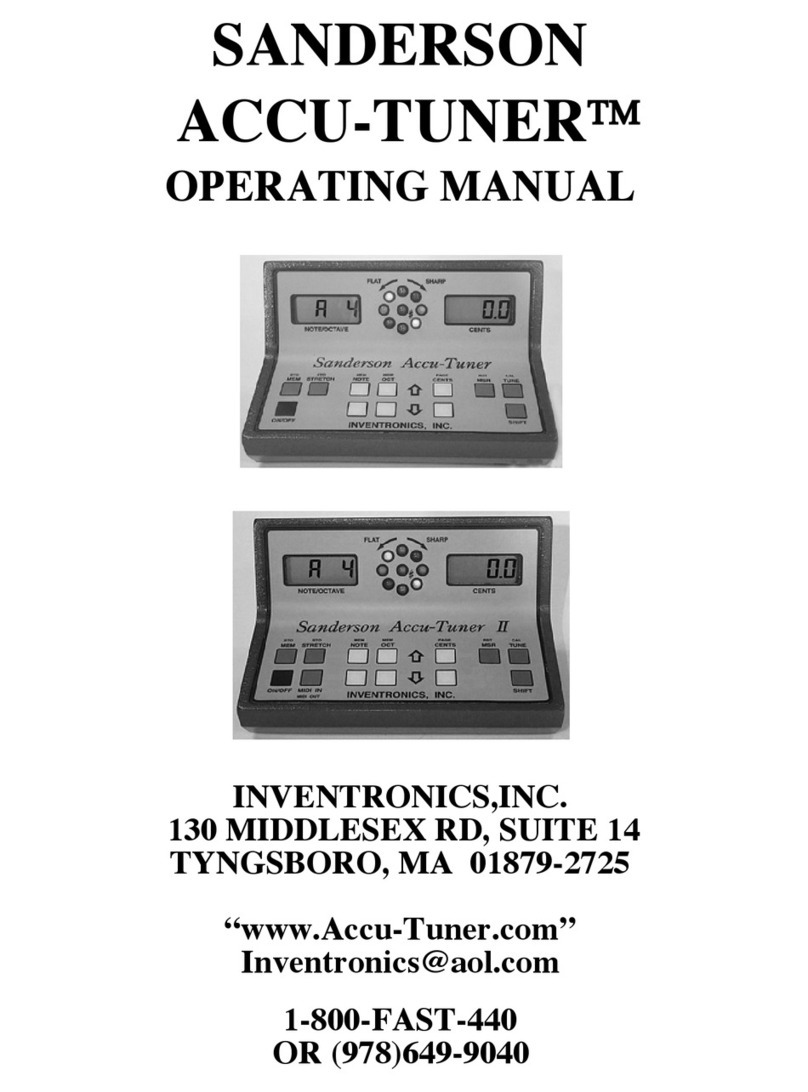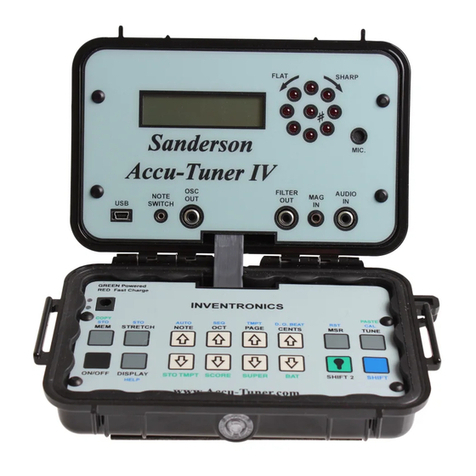
6
most notes.) The fact that some strings are mismatched makes it extremely important for the tuner
to check all unisons aurally when they have been tuned with the SOT II. However, do not try to
check the unisons aurally during any pitch raise. Pulling up adjacent strings affects the pitch of the
strings that have already tuned. The settling process on a string is not complete until another
octave or so has been tuned.
Aural unison tuners should be aware that pulling in two outside strings to the tuned center string
will affect the pitch of the center string. The amount is roughly equal to one-fifth of the net pitch
change. As a result, when there is more than a few cents pitch change involved, tuning unisons
aurally can actually leave them out of tune in the end! To avoid getting into this situation, give the
piano a quick pitch raising (or lowering) before trying to do a fine-tuning. If the piano is more than
five to ten cents flat, it will actually save time to do a quick pitch raise before attempting to fine-
tune the piano.
TUNING BEYOND C3 TO F6
DIRECT TUNING THE HIGH TREBLE
Tuning the high treble with the SOT is relatively easy. The best tuning for each note can be
determined by reference to one, two or three already-tuned notes. These notes lay one octave,
octave-fifth, and two octaves lower than the note being tuned.
1) Set the SOT II to the NOTE and OCTAVE of the note being tuned (in TUNE mode).
2) Play the reference notes one at a time and see how they look on the rotating LEDs.
3) Turn the CENTS knob up or down until a cents setting that is a good compromise between the
reference notes. A cents setting where some of the reference notes rotate slowly sharp and
some rotate slowly flat.
4) Then tune the note.
Tuning is more challenging in the last octave because a good compromise may be impossible to
find. Decide which interval will take priority and tune mainly to satisfy its requirements. At this
point many tuners stick to the single octave, but tune one or two cents wide. Others prefer to tune
the double octave, which gives a sharper top end, or the octave-fifth, which is quite a bit sharper.
The choice is up to personal taste and the customer preference.
DIRECT TUNING THE BASS
Tuning the bass is similar in principle to tuning the high treble. Set the SOT II with reference to
several previously tuned notes and compromise among them to place the note being tuned.
The best reference notes lay an octave, an octave-fifth, and a double octave-fifth higher than the
note being tuned. To use these reference notes, set the SOT II a double-octave-fifth higher than the
note being tuned (on its sixth partial).
1) Play each reference note one at a time.
2) Turn the CENTS knob until a good compromise setting is found, one where some reference
notes are rotating slightly flat, others slightly sharp.
3) Tune the note.
4) Continue this procedure all the way down to A0.
In contrast to the situation in the high treble where the three tests diverge, the three bass tests
usually work nicely all the way down to A0.





























